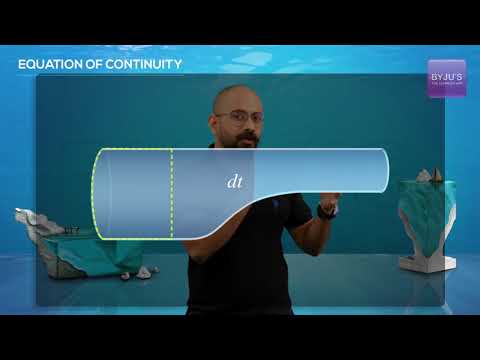The transfer of various quantities, such as fluid or gas, is described by the continuity equation. The formula describes how a fluid conserves mass while moving. How a fluid conserves mass while moving is described by the equation. The continuity equations can be used to demonstrate the conservation of a wide range of physical phenomena, including energy, mass, momentum, natural numbers, and electric charge. The continuity equation offers useful knowledge about the flow of fluids and their behaviour as they go through a pipe or hose. The Continuity Equation is used on a variety of objects, including tubes, pipes, rivers, and ducts that carry gases or liquids. The continuity equation can be written in differential form, which is applied at a point, or in integral form, which is applied in a finite region.
Deriving the Equation of Continuity

Where,
m = Mass flow rate
ρ = Density
v = Speed
A = Area
With uniform density equation (1), it can be modified to:
Where,
q = Flow rate
Fluid Dynamics
According to the continuity equation in fluid dynamics , the rate at which mass exits a system is equal to the rate at which mass enters a system in any steady state process.
The differential form of the continuity equation is:
Where,
t = Time
ρ = Fluid density
u = flow velocity vector field.
Watch the video to learn more about the practical application of the equation of continuity, its derivation, fluid velocity and different types of flow: steady flow and turbulent flow.

Frequently Asked Questions – FAQs
What is the principle of continuity?
Where is the Equation of Continuity used?
What is the importance of the continuity equation?
What does the continuity equation in fluid dynamics describe?
When can the Continuity equation be used?
Register to “BYJU’S – The Learning App” for loads of interactive, engaging Physics-related videos and unlimited academic assist.


Comments